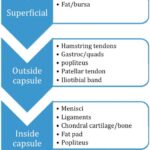Type 1 diabetes is a chronic autoimmune condition where the body’s immune system mistakenly attacks and destroys insulin-producing cells in the pancreas. This leads to an insulin deficiency, causing glucose to build up in the bloodstream. While type 1 diabetes can develop at any age, it’s more frequently diagnosed at certain stages of life. Understanding the average age for diagnosis is crucial for early detection and management.
Peak Age Ranges for Type 1 Diabetes Diagnosis
Although type 1 diabetes isn’t limited to a specific age group, there are two noticeable peak periods when diagnosis is most common. The first peak occurs in young children, typically between 4 and 7 years old. The second peak is during puberty, among children and teenagers aged 10 to 14 years. These age ranges represent periods where children experience rapid growth and hormonal changes, which may contribute to the onset of type 1 diabetes in genetically predisposed individuals. However, it’s important to remember that type 1 diabetes can be diagnosed outside of these peak age ranges, including in infancy and adulthood.
Why Age of Diagnosis Matters
Recognizing the typical age ranges for type 1 diabetes can help parents and healthcare providers be more vigilant about potential symptoms. Because the onset of type 1 diabetes can be rapid, especially in children, early diagnosis is critical to prevent serious complications like diabetic ketoacidosis (DKA). Prompt diagnosis ensures timely initiation of insulin therapy and education on diabetes management, leading to better long-term health outcomes. While the condition is more common in children and adolescents, adults can also develop type 1 diabetes, sometimes referred to as Latent Autoimmune Diabetes in Adults (LADA). Therefore, awareness of type 1 diabetes symptoms across all age groups is essential.
Factors Influencing Type 1 Diabetes Onset
While the exact cause of type 1 diabetes remains unknown, several factors are believed to increase the risk and potentially influence the age of diagnosis.
- Genetics: Family history plays a significant role. Individuals with a parent or sibling with type 1 diabetes have a higher risk of developing the condition. Specific genes related to the immune system are also associated with increased susceptibility.
- Geography: Interestingly, the incidence of type 1 diabetes increases with distance from the equator. This geographical variation suggests environmental factors, such as viral infections or vitamin D levels related to sunlight exposure, might play a role in triggering the autoimmune process.
- Environmental Triggers: Researchers are exploring various environmental factors that could trigger type 1 diabetes in genetically susceptible individuals. Viral infections, particularly enteroviruses, have been investigated as potential triggers. Dietary factors and early childhood exposures are also areas of ongoing research.
Recognizing Symptoms Across Age Groups
The symptoms of type 1 diabetes can appear suddenly, particularly in children and adolescents. Common signs and symptoms include:
- Increased Thirst (Polydipsia): Excessive thirst is a hallmark symptom as the body tries to flush out excess glucose through urine.
- Frequent Urination (Polyuria): Increased urination, including bedwetting in previously dry children, is another common symptom.
- Extreme Hunger (Polyphagia): Despite eating more, individuals may experience persistent hunger as glucose cannot enter cells for energy.
- Unintended Weight Loss: Weight loss can occur even with increased appetite as the body starts breaking down muscle and fat for energy.
- Fatigue and Weakness: Lack of glucose in cells leads to tiredness and weakness.
- Blurred Vision: High blood sugar can affect the lens of the eye, causing temporary blurred vision.
- Irritability and Mood Changes: Fluctuations in blood sugar levels can lead to mood swings and irritability.
These symptoms should prompt immediate medical evaluation, especially in children and teenagers within the peak age ranges. However, adults experiencing these symptoms should also seek medical attention to rule out diabetes.
Diagnosis and Management at Any Age
Diagnosis of type 1 diabetes involves blood tests to measure blood glucose levels. Common diagnostic tests include:
- A1C Test: This test reflects average blood sugar levels over the past two to three months.
- Random Blood Sugar Test: Blood sugar is checked at any time of day.
- Fasting Blood Sugar Test: Blood sugar is measured after an overnight fast.
If diabetes is diagnosed, further tests like the C-peptide test and antibody tests can help differentiate between type 1 and type 2 diabetes, especially when the diagnosis is uncertain, or in adult-onset cases.
Management of type 1 diabetes, regardless of the age of diagnosis, primarily involves lifelong insulin therapy. This can be administered through injections or insulin pumps. Comprehensive management also includes:
- Frequent Blood Glucose Monitoring: Regular monitoring is crucial to adjust insulin doses and manage blood sugar levels effectively.
- Carbohydrate Counting: Learning to count carbohydrates in meals helps match insulin doses to food intake.
- Healthy Eating: Following a balanced meal plan is essential for blood sugar control and overall health.
- Regular Exercise: Physical activity improves insulin sensitivity and helps manage blood sugar.
Advances in technology, such as continuous glucose monitors (CGM) and insulin pumps with automated insulin delivery, have significantly improved the management and quality of life for individuals with type 1 diabetes across all ages.
Conclusion
While type 1 diabetes can be diagnosed at any age, it is more commonly identified during childhood and adolescence, with peak diagnoses between 4-7 and 10-14 years old. Understanding the average age for diagnosis, recognizing the symptoms, and being aware of risk factors are crucial for early detection and prompt management. Regardless of when diagnosed, with appropriate treatment and ongoing management, individuals with type 1 diabetes can live full and healthy lives. If you or someone you know is experiencing symptoms of type 1 diabetes at any age, seeking timely medical advice is essential.

